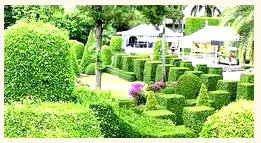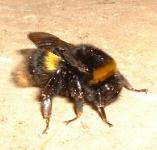
The Common Frog is the most widespread species in Europe. Their relatively smooth skin varies in colour from olive green and yellow, to dark brown, speckled with black, brown or red and can lighten or darken to blend in with the surroundings. There are dark cross bars on the limbs and a dark patch behind the eyes. The under side of the body is off-white or yellow with some speckles. The skin can also be used to 'breathe' when oxygen demand is low such as when hibernating through the winter in the debris at the bottom of a pond - they will also hibernate in cool moist conditions under logs or other plant debris where it is unlikely to freeze.
Males are slightly smaller than the females - an average size for an adult is 7.5 to 8 cm and 23g in weight. The males also have dark pads or swellings on the first digits of the fore legs which are used during mating to grip the female, they become more pronounced during the mating season. The long muscular hind limbs enable them to leap about 50cm.
They prefer to be in cool, moist conditions under dense herbaceous foliage where they prey on invertebrates like slugs, snails, worms and insects, trapping them with their long, sticky tongues. This makes them a garden friend as anything which reduces the slug and snail population is most welcome. Apart from during the breeding season they are found in gardens, open fields and in woods, coming to bodies of shallow water in the spring to find a mate. They do not search for food in water, and do not feed during the mating period. In the food chain, frogs form part of the diet of birds such as herons, foxes and other hunting mammals.










